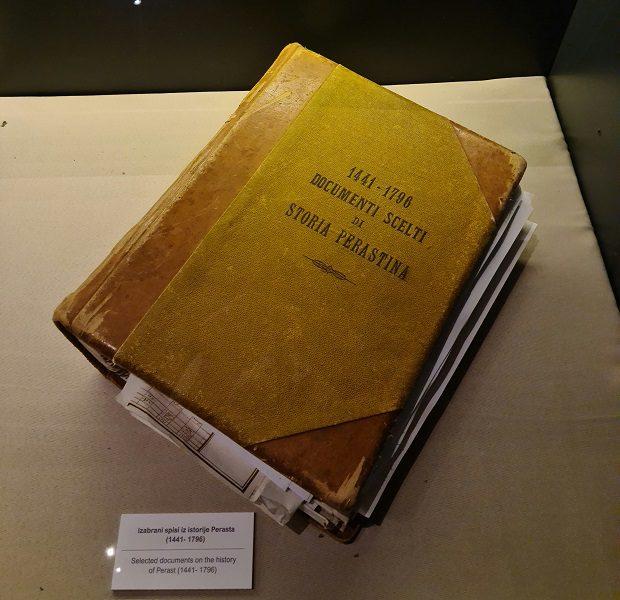
Selected documents on the history of Perast
(1441-1796)
A collection of records and important documents which testify to the historical, economic and cultural trends related to the development of the city of Perast. They cover four decades of the pre-Venetian period and almost three centuries of Perast's loyalty to the Republic of Venice.

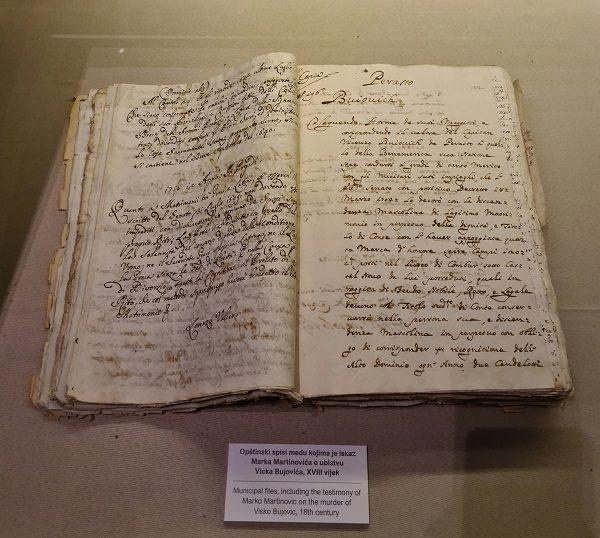
Municipal files, including the testimony of Marko Martinovic about the murder of Vicko Bujovic,
18th century
The statement by the distinguished Perast citizen and captain, Marko Martinovic, about the circumstances in which Count Vicko Bujovic was killed in a conspiracy on May the 6th 1709 in Perast town square.

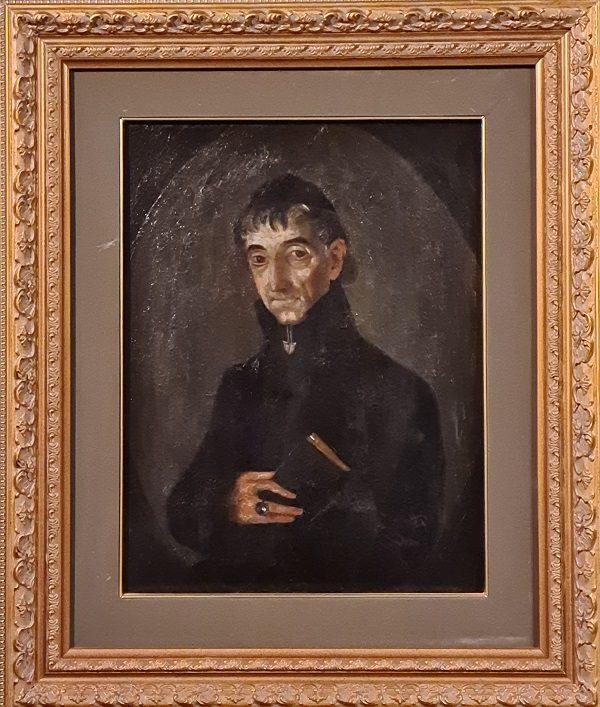
Unknown artist:
Portrait of Ivan Krusala,
oil on canvas, 18th century
Ivan Krusala, diplomat, travel writer, theologian and abbot of the monastery on the island of St. George, came from Mystra in the Peloponnese and was brought to Perast as a boy by people returning from the Morea War. He was adopted and put through education in Italy by Matija Krusala, also from Perast. The Bay of Kotor had close relations with the Russian court and Ivan Krusala was among the representatives of the Russian Emperor Peter the Great, who travelled across Asia to visit the Chinese emperor for negotiations. He spoke Greek and Turkish, which helped him in his diplomatic endevours. During his service he had the full confidence of the Russian emperor.

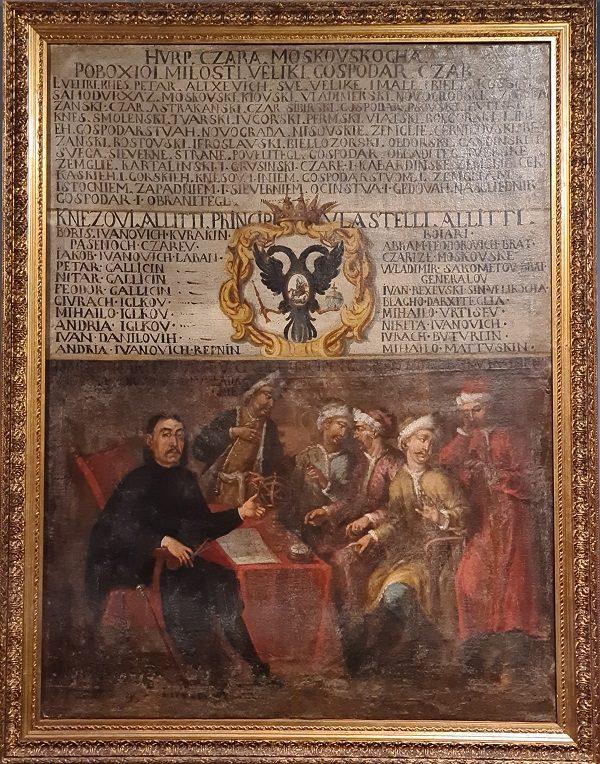
Unknown artist:
Marko Martinovic with Russian boyars in Perast in 1698,
oil on canvas, 1711.
The painting "Marko Martinovic with Russian boyars in Perast in 1698" was painted in 1711 and was created to preserve the memory of the naval training organised by the renowned captain, Marko Martinovic in 1698. It is known that the Russian Emperor Peter the Great, in order to modernise his fleet, sent his cadets to Venice and they were given training by the excellent maritime expert, Captain Martinovic, they travelled through the Adriatic Sea, once known as the Gulf of Venice, to his hometown. Their maritime training confirmed the great reputation that seafarers from Perast had acquired in Venice, which at the time, had the most powerful naval fleet in the world. The painting is one of the symbols of the city of Perast and is one of the most important exhibits in Perast City Museum.

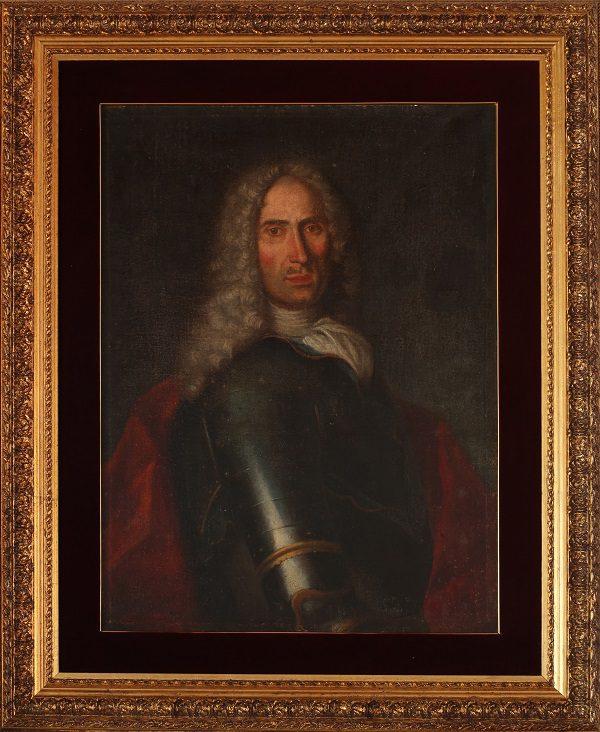
Unknown artist:
Portrait of Matija Zmajevic,
oil on canvas,18th century
Admiral Matija Zmajevic (1680-1735) was the son of the well known seafarer Krsto (Krila) Zmajevic and the nephew of Archbishop Andrija Zmajevic. In keeping with his family's maritime tradition, he became a ship commander at the age of 18. Through his friend, Count Pyotr Tolstoy, he was accepted into service in the Russian navy as an experienced sailor in 1712 by the Russian Emperor Peter the Great. Matija Zmajevic distinguished himself in the battles against the Swedish navy near Gangut (Hankow) in the Gulf of Finland, which gave Russia supremacy in the Baltic Sea. He was then promoted to a higher rank, and in 1727 he was given the rank of admiral of the Russian Imperial fleet. He ended his naval career as the governor of the Astrakhan province and commander-in-chief of the port of Tavrov on the Don River.

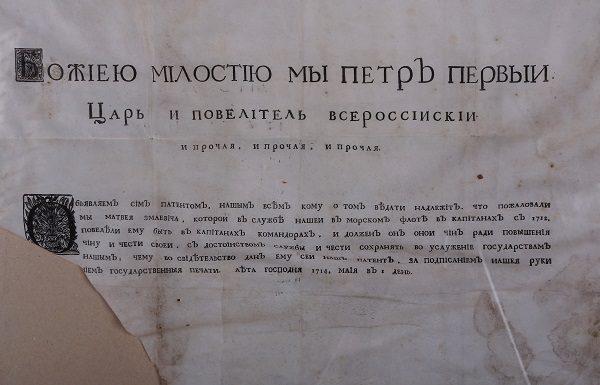
Russian diploma awarded to Matija Zmajevic,
1714
The diploma by which, the Russian Emperor Peter the Great, awarded Matija Zmajevic a higher rank for his merits in the Battle of Gangut (Hankow) against the Swedish fleet.

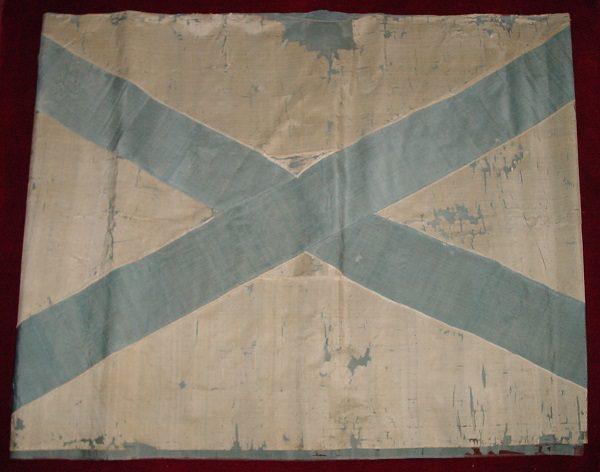
Flag of the Imperial Russian Baltic Fleet,
18th century
The Russian flag with St. Andrew's cross made on blue silk, which was presented by the Russian Emperor Peter the Great to the vice-admiral of the Russian fleet, Matija Zmajevic, after the great tactical victory at Gangut (Hanko) in southern Finland in 1714.


Matija Zmajevic's sword,
17th century
A Venetian type of sword with a hilt which belonged to Admiral Matija Zmajevic. It was in his possesion whilst he was still in Perast before going into service in the Russian Imperial Navy.


Venetian swords - schiavone,
17th and 18th century
Venetian swords of the schiavone type were used in the Bay of Kotor, Dalmatia and Istria during Venetian rule in the 17th and 18th century. They are one-handed swords that differ in the hilt and the shape of the scabbard.

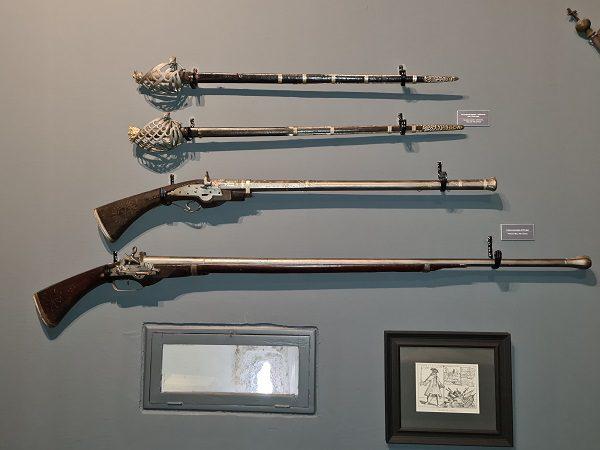
Flintlock rifles,
18th century
Antique flintlock rifles, part of the diverse weapons collection housed in Perast City Museum.

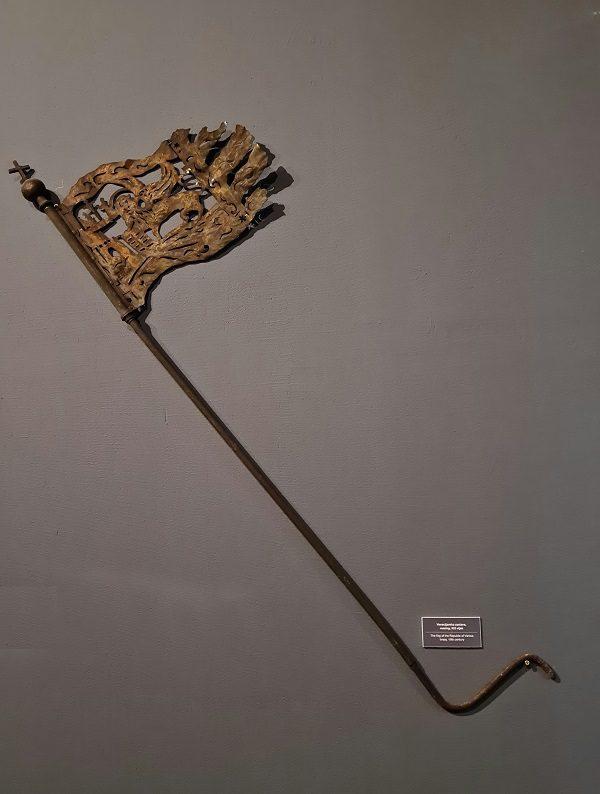
The flag of the Republic of Venice, brass,
18th century
The only remaining brass flag of the Republic of Venice, which stood on the pillar of the Health Office on the main square in Perast in front of the Church of St. Nicholas.

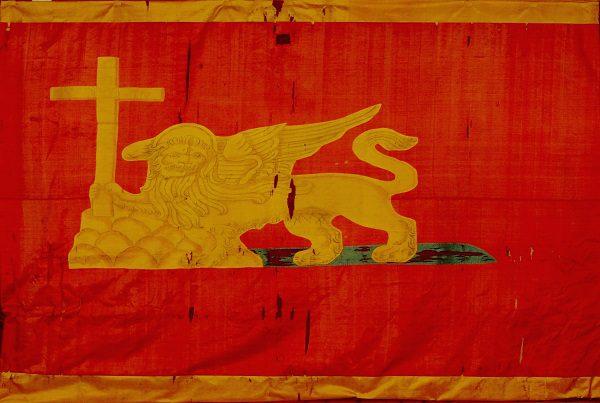
The flag of the Venetian Republic,
18th century
The flag of the Venetian Republic testifies to the rule of Venice over Perast in the period from 1420 to 1797. It is believed that Perast was the last city to take down the flag of the Republic of Venice - two months after the republic fell. The representation of the lion of Saint Mark with a cross or a sword represented Venice in a campaign of war.


Part of a Venetian flag with the Coat of Arms of the city of Perast,
18th century
Part of a Venetian flag with the coat of arms of the city of Perast, represented in the central part by two hands holding a cross. The flag is made of silk and irregularly cut on all sides. It is believed that, after the fall of the Republic of Venice, the people of Perast took pieces of this flag to preserve them as a memory of the golden era that Perast experienced under the rule of Venice.

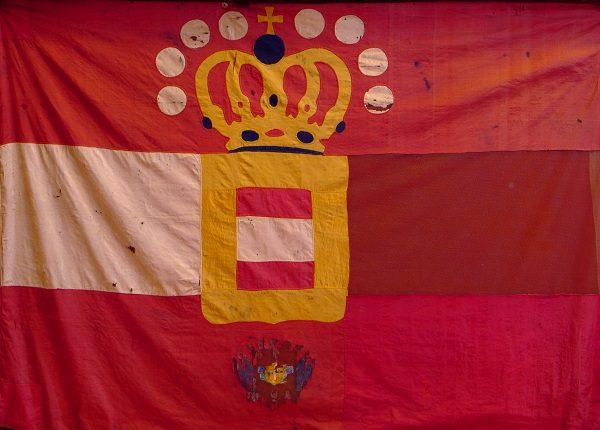
Austrian flag,
19th century
An Austrian flag from the period of rule after the fall of the Republic of Venice. The flag had the coat of arms of the city of Perast on it, which has not been preserved.

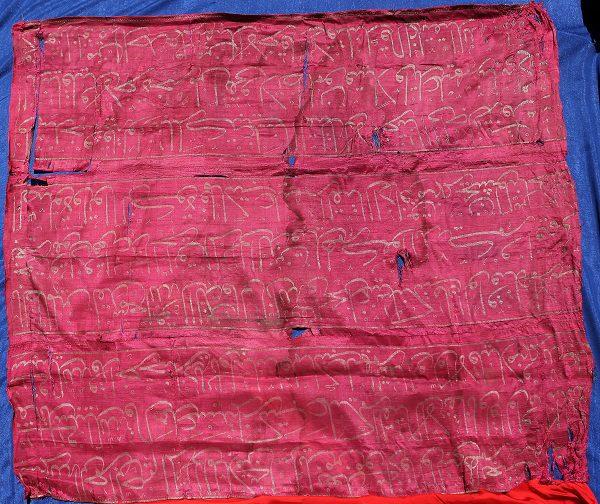
Turkish flag,
19th century
The red silk flag, features verses from the Koran written in Arabic script. The flag is embroidered with silver thread. The upper edge had later been embroidered with white thread in large stylized letters: CO ANNIBALE VISCOVICH ACRI 1840. In the central part, there is a small oval shaped picture of Hannibal Viskovic who, it is belived, brought this flag to Perast in 1840 as a war trophy from the battle for the liberation of the Fortress Saint John in Acre (Syria).

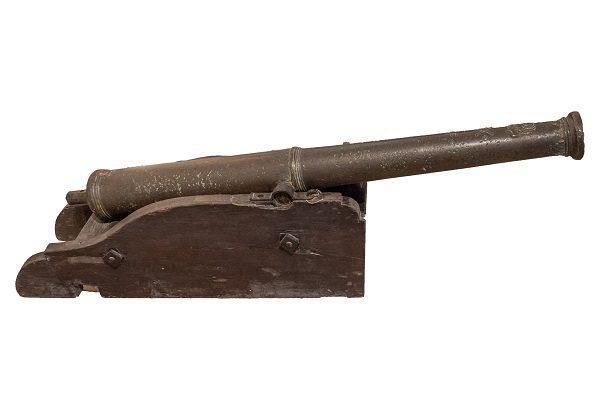
Falconet type cannon Zelenko,
17th century
In the rich collection of firearms in Perast City Museum, a Venetian falconet type cannon, popularly known as Zelenko, stands out. It was made in Venice in the 16th century, and on July the 4th, 1677, was given as a gift to the young men of Perast to help them in learning military skills. The markings on the cannon are as follows: the Venetian lion as the symbol of Venice, the numeral X as the symbol of the Venetian authority of the Council of Ten, and the letter F as the foundry's mark. There are only two other cannons in the world with the same foundry mark, one is in Istanbul and the other in Marmaris. What makes the cannon, known as Zelenko, so unique, is the original carriage from the 17th century. The falkonet cannon Zelenko is an immensely valuable reminder of Perast's glorious past.

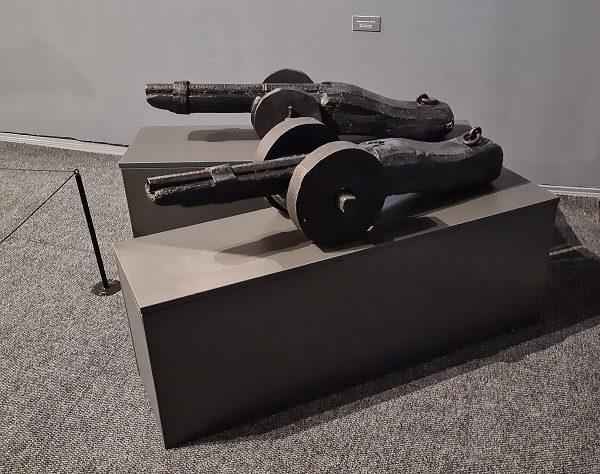
Taras - signal cannons,
15th and 16th century
The small signal cannons in Perast City Museum's weapons collection were used during Venetian rule to warn of danger from land or sea and to alert Perast to defend itself against attacks from the Ottoman military forces or pirates from all over the Mediterranean.

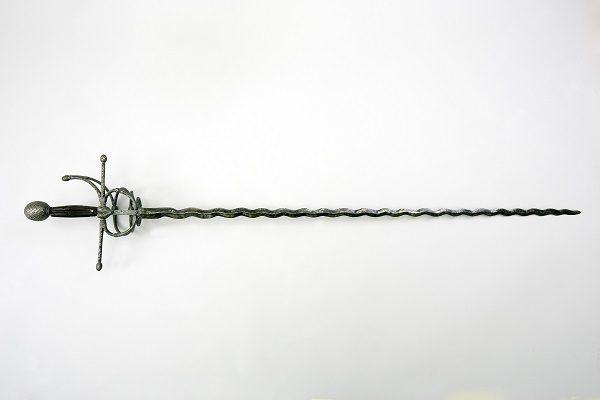
Flaming sword,
Toledo,
16th century
The flaming sword was made in Toledo, Spain in the 16th century and got its name from the shape of the blade, which is wavy and resembles tongues of flames. This is the only example of this type of cold weapon in our region. It belonged to Carlos Gonzaga, commander of Herceg Novi during Spanish rule (16th century). Folklore stories and poems from Nikola Mazarovic's collection of poems, link this sword to a duel in which the people of Perast took revenge on Don Carlos Gonzaga for dishonoring two girls from Perast.


Trident,
Corsica,
17th century
The corsica trident is a cold weapon whose name comes from the island of Corsica, being its place of origin. It is one of the European long weapons on poles (1.8-2.5 m) and it is recognisable by its deadly three-headed blade. The corsica trident was widely used in Europe from the 16th to the 18th century.


Mace,
15th century
This mace is the oldest cold weapon in the collection of Perast City Museum. It could be hand held or thrown, it dates back to the 15th century and was used by the infantry, especially horsemen.

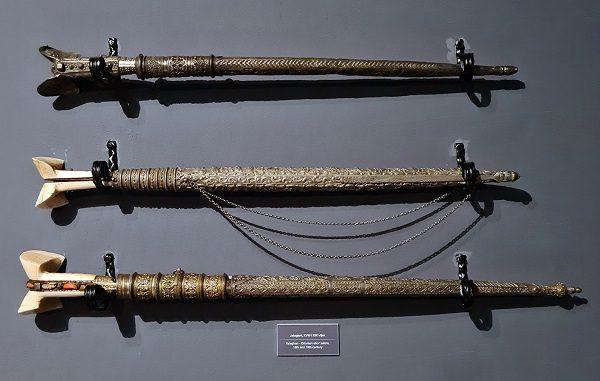
Yataghans – Ottoman short sabers,
18th and 19th century
Yataghans are sabers with a one-sided blade whose handles are made of silver, wood and bone and are decorated with coral. It is significant that a large number of yataghans were made in artisan workshops in Risan and Kotor. Our collection includes yataghans with inscriptions in Persian on the blades and scabbards with exquisite filigree decoration.

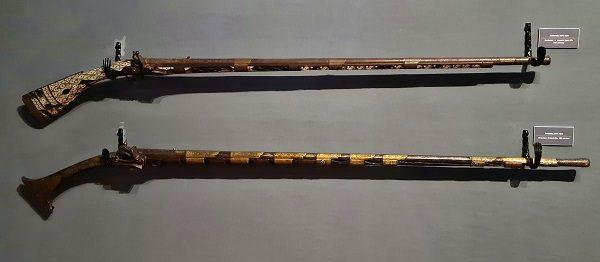
Jefferdar – a miquelet type rifle,
Arnautka – a miquelet type rifle from the Balkans,
18th century
Jefferdars are long flintlock rifles whose butts were often richly decorated with mother-of-pearl. It is known that they were made in artisan workshops in Risan, Kotor, Herceg Novi and Shkodra, some of them bore the name of the artisan who made it.
Arnautkas are flintlock rifles distinguished by their long and slender barrels which made them suitable for fighting at long distance, especially in hilly and wooded areas.
